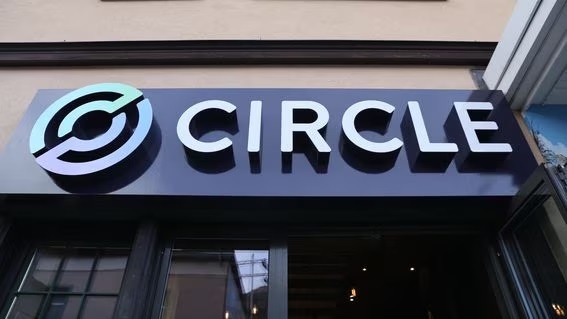
Stablecoin issuer Circle Internet Group Inc. and its backers have raised nearly $1.1 billion in an upsized initial public offering (IPO) that priced above expectations, marking a significant moment of validation for the crypto industry as it inches closer to mainstream financial markets.
The IPO, which saw strong investor demand, suggests growing confidence in stablecoins at a time when the U.S. Congress is advancing legislation that could soon bring regulatory clarity to the sector.
Circle and its shareholders sold 34 million shares at $31 each, above the raised price range of $27 to $28, which itself had been increased earlier this week from the original $24 to $26 range. The offering gives the company a market capitalization of $6.9 billion, and a fully diluted valuation of approximately $8.1 billion when stock options and other securities are factored in.
Register for Tekedia Mini-MBA edition 19 (Feb 9 – May 2, 2026): big discounts for early bird.
Tekedia AI in Business Masterclass opens registrations.
Join Tekedia Capital Syndicate and co-invest in great global startups.
Register for Tekedia AI Lab: From Technical Design to Deployment (next edition begins Jan 24 2026).
The robust investor appetite led to orders outstripping available shares by more than 25 times before books closed on Tuesday, according to people familiar with the matter cited by Bloomberg.
Among those participating in the IPO are ARK Investment Management, which plans to purchase up to $150 million worth of shares, and BlackRock Inc., which intends to acquire approximately 10% of the offering. BlackRock already plays a critical role in Circle’s operations, managing a $53.3 billion reserve fund that backs its U.S. dollar-pegged stablecoin, USDC.
Circle itself sold 14.8 million shares while selling shareholders divested 19.2 million, including co-founder and CEO Jeremy Allaire. Trading of the stock is expected to commence Thursday on the New York Stock Exchange under the ticker symbol CRCL.
Circle’s public debut comes at a pivotal moment for the stablecoin industry. With Congress advancing legislation to regulate these dollar-pegged digital tokens, the IPO signals a turning point in the acceptance of crypto-related businesses by traditional markets. Legislation could boost trust and draw in even more institutional investors and competitors. According to a report from the Wall Street Journal, some of Wall Street’s largest banks are now exploring their own dollar-backed digital currencies.
Circle’s USDC currently commands about 29% of the stablecoin market, according to its SEC filings citing CoinMarketCap data. As of May 29, about $61 billion worth of USDC is in circulation. While USDC has seen its market share decline in the face of strong competition from Tether, Circle has sought to emphasize transparency in its reserve backing and its commitment to regulatory compliance.
The IPO also comes more than a year after Circle scrapped its earlier attempt to go public via a SPAC merger that would have valued the company at $9 billion. At that time, the crypto market was reeling from a series of setbacks, including the collapse of FTX and a widespread loss of investor confidence. Circle was last valued at $7.7 billion in a private funding round in 2022, according to PitchBook.
Now, with stronger demand and greater policy attention on stablecoins, Circle appears to be entering public markets under far more favorable conditions. The IPO was led by JPMorgan Chase, Citigroup, and Goldman Sachs, all of whom have deepened their involvement in digital asset infrastructure in recent years.
The success of the listing could open the door for more crypto-native firms seeking to bridge into traditional finance through public offerings, particularly if U.S. lawmakers finalize a regulatory framework that treats stablecoin issuers more like financial institutions.



